Disclosure: Meeple Mountain received a free copy of this product in exchange for an honest, unbiased review. This review is not intended to be an endorsement.
Imagine, if you will, an age of industry and enlightenment. Everywhere you look people are working together in harmony to construct sprawling metropolises and monuments so grand that they can be seen from outer space. Each person has their place in this world and they are celebrated for their achievements. Humankind has tamed nature and found a sustainable rhythm with the planet it inhabits and now it looks outwards ready to spread its wings and fly. Things are pretty marvelous and they’re only going to get better from here on out.
Now forget all of that. This isn’t that kind of game.
The people you’ll meet in Age of Dirt: A Game of UNcivilization are cave dwelling, bottom feeding, fur wearing neanderthals. But they’re OUR cave dwelling, bottom feeding, fur wearing neanderthals. So, let’s create a civilization, shall we?
Overview
In Age of Dirt the players take on the roles of chieftains of competing clans of cavemen in an effort to be the first one to score 10 victory points. Points are achieved by constructing inventions and there’s an extra point available for players that are able to unlock all of their workers.
Invention cards require some mixture of the 5 different resources to construct: berries, wood, stone, herbs, and fur. Obtaining one of these resources is as easy as sending one or two of your workers to the appropriate location. But cavefolk aren’t well known for their intellectual feats, and aren’t the most reliable workforce. They’re easily distracted and sometimes forget what it is that they’re supposed to be doing. So while you hope that your worker will go out and gather some berries, don’t be surprised if they return with an armload of fur instead.
This is a high level overview of Age of Dirt. Keep on reading if you’re interested in learning how the game is played. Otherwise, feel free to skip ahead to the Thoughts section.
The Dawn of UNcivilization
To begin setting up the game, the four area boxes (forest, plains, mountains, and the love tent) are set side by side with the Passage and the cardboard club close by. (We’ll talk more about the functionality of these different pieces later.) Then the Reserve board is placed next to these. The tiger meeple is placed into the plains area box.
Next, each player chooses a color and takes the appropriate player board along with 4 workers of the chosen color. The remaining 3 are placed onto the Reserve board (along with the bear meeple). Each player will also receive a drum and a spear. One of these will be flipped face up and the other face down. The choice of which is entirely up to the player.

After this, the Clan cards (starter Inventions) are shuffled and each player is dealt two of these: one to keep and one to discard into the box. There are also a number of Invention and Event cards. These are shuffled together to form a deck and placed face down within reach of all players. Two of these are flipped face up next to the deck. If an Event card should be flipped, draw a different card instead and reshuffle the Event card into the deck.
Finally, a starting player is chosen and you are ready to begin.
Sticks and Stones May Break My Bones and Might Even Taste Good
Age of Dirt is an untraditional take on a worker placement game. Unlike most worker placement games where you send your worker to a spot and immediately carry out the action, the workers you send out in Age of Dirt just sit there waiting until one of the players decides to process the location where the worker was placed. Even then, the worker isn’t guaranteed to perform the action they were tasked with carrying out because first they must make it through the Passage. But I’m getting ahead of myself…
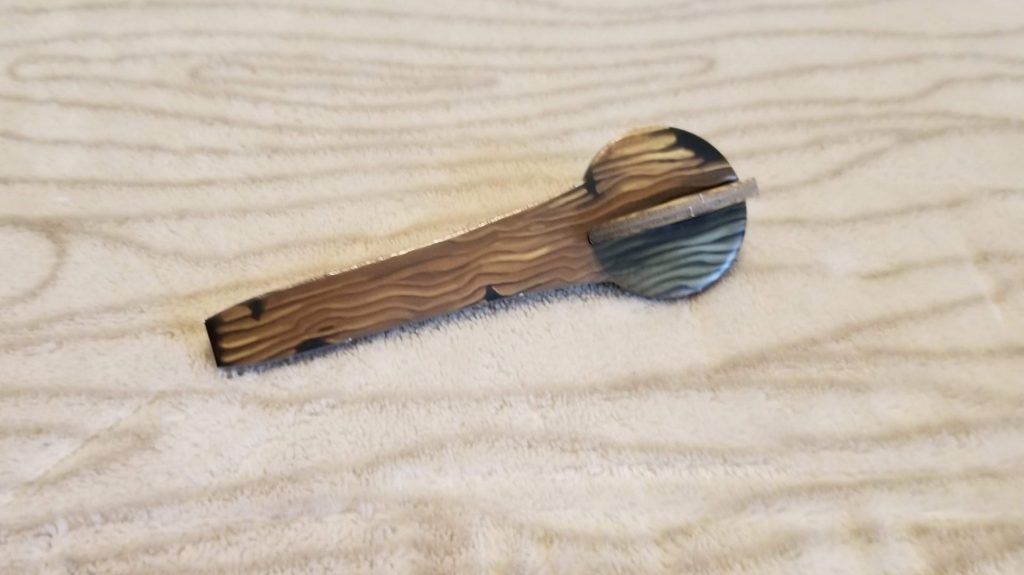
During the game, players will take turns performing one action at a time until a player manages to score 10 points and win the game. On a player’s turn they have three options available to them:
- Send out clan members (the technical term for your workers): take 1 or 2 of your workers and add them to different (or the same) area boxes.
- Call back clan members: choose an area box, pick it up, and then toss all of the workers that are inside of the box into the Passage. Depending on the area box, you will also receive a bonus for being the one that picked up the box. The area box determines which resources will be collected. The workers that fall out of the Passage determine who actually receives the resources. We’ll get into more detail about this process momentarily.

A tumble through the Passage. - Spend resources: pay your collected resources to the bank to perform various tasks: expanding your cave so you can hold more resources at a time, constructing tools (i.e., flipping either your spear or your drum to its active side), adding additional Invention cards to your hand, or constructing inventions from the available cards in your hand or the display.
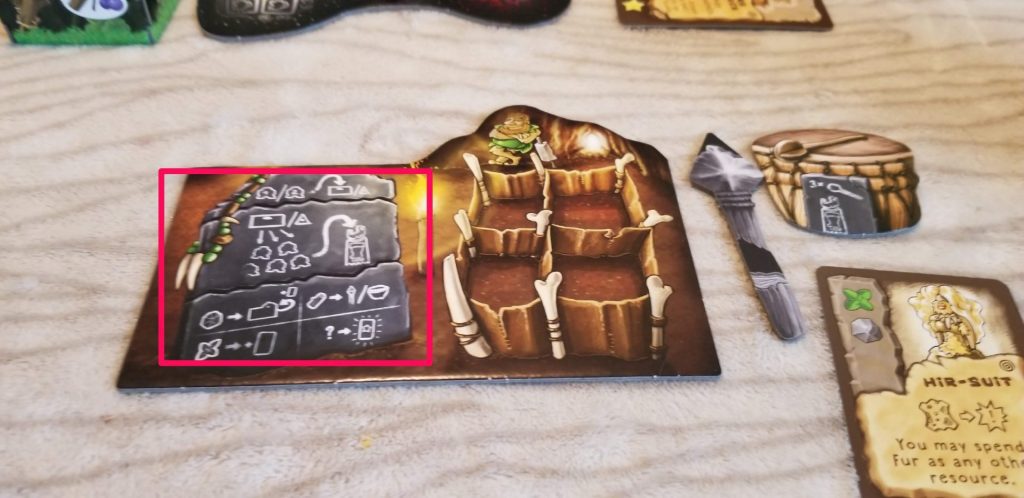
Rites of Passage
The Passage is essentially a cube tower, but for meeples. Inside of the tower are several shelves that meeples will occasionally get stuck on. This means that not every worker tossed into the Passage will make it out. It might even mean that workers from previous turns belonging to yourself or other players may fall out instead!

And this is where the drum comes in. The Passage has several protuberances along its outer shell. At any point during anybody’s turn a player may opt to turn their drum to its inactive side to use the cardboard club to hit each of these once in an effort to shake loose any meeples that may be hung up inside.
It’s been touched on before, but it’s worth reiterating that each area box provides a different resource when the workers inside are placed into the Passage. The different area boxes, the bonuses for being the player to recall the workers from them, and the benefits they provide are:

Forest (flip your spear or drum to its active side): collect 1 wood or berry per worker that makes it through the Passage.
Plains (no bonus): the tiger gets tossed into the Passage along with the workers. When the tiger appears, it eats one worker of each player color that emerged along with it. A player may flip their spear to its inactive side to ward off the tiger. Any workers gobbled up by the tiger are sent to an unoccupied spot on the Reserve board. Only 4 workers of each color can be held here. Consequently, a player will always have at least 3 workers at their disposal. Every worker that makes it out alive earns its owner 1 hide.
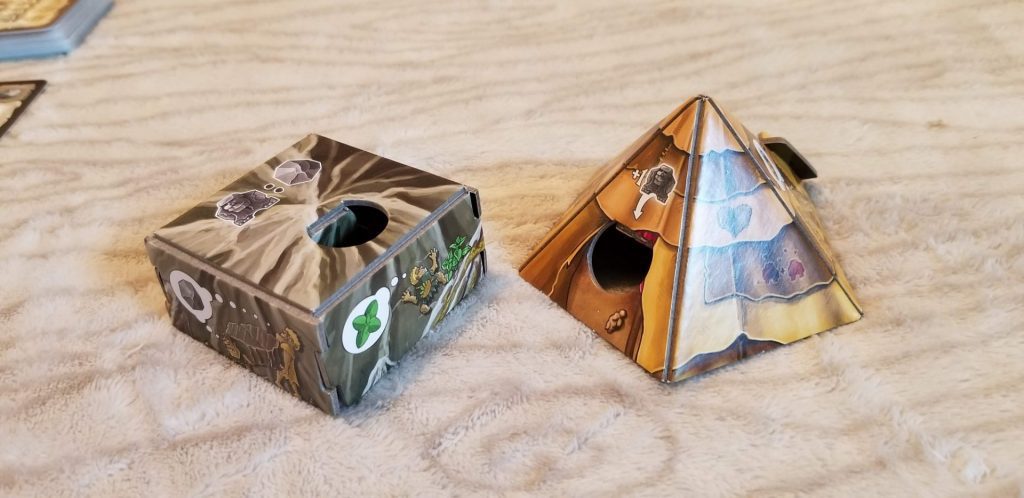
Mountains (1:1 rate when collecting stone): players collect 1 stone for every 2 workers of their color that emerge from the Passage or 1 herb per worker.
Love Tent (add 1 additional worker from your cave to this area box before tossing the workers into the Passage): this is where new workers come from. For every 2 workers of a player’s color that emerge from the Passage, the player may take 1 of their workers from the Reserve board and add it to their cave. If more than one player has only a single worker emerge, they may both agree to have their workers… work together to remove 1 worker each from the Reserve board to add to their respective caves. Any other workers are sent to other area boxes instead.
It’s Dangerous Out There
In addition to the Invention cards in the card deck, there are also various Event cards sprinkled throughout. Whenever an Event is flipped up or drawn from the deck, it is dealt with immediately and then replaced with a new card. These Events are sometimes helpful and sometimes not so much. I’m not going to go into detail about each Event, but there is one in particular that is worth mentioning. The Event titled “Roooar” adds the bear meeple to one of the area boxes. Once it’s tossed into the Passage and eventually falls out, it is treated just like the tiger. However, a spear may only be used to ward off a single threat, so if it happens that the bear and the tiger should fall out at the same time, someone’s going to get eaten. Here’s a photo of the various Events:

Thoughts
Let’s get this right out there. Age of Dirt probably isn’t going to be winning any Game of the Year awards. Worker placement, cube towers, resource collection and management, the race to 10 points: there’s nothing here that hasn’t already been done before and been done better. So you might be asking yourself, “Why even bother?”
That’s a good and valid question.
Age of Dirt’s not trying to reinvent the wheel. It also isn’t trying to pretend to be anything other than what it is: a silly game, chock full of dad joke puns, based on an even sillier premise. Namely, cavemen are unreliable. And it’s delightful because of it.

I’m the kind of person that primarily enjoys heavy games; the harder to play and master the better. I enjoy the analysis paralysis-inducing puzzles that games like that present. Age of Dirt typically wouldn’t be a game that would do anything for me and I found that was exactly the case when I played the game with my wife. We both agreed that while the game wasn’t terrible, it also wasn’t something either of us would ever go out of our way to play. At the most, we would award it with a solid “meh”. And then I got to play the game with my parents. That experience showed me Age of Dirt’s real value.
Age of Dirt is a game that requires a very specific kind of audience to shine. Namely, it’s a game that excels at being just light and easy enough for people that aren’t die-hard board gamers to enjoy while also sprinkling in just enough puzzly elements for more experienced gamers. For instance, while I wasn’t faced with the same brain-burning decisions that a game like Bus or A Feast For Odin might present me with, there were moments where I found myself holding two of my workers in my hand deliberating the best area boxes to place them in. Ideally I’d rather be placing my workers as my action than using that action to choose which area box to send through the Passage. So, based on what I think my opponents are most likely to choose, which area boxes should I go with?
Like I said, nothing brain melting. But, it’s just enough to make the game enjoyable for a person like me. More importantly, my parents had a good time. The rules were easy enough for them to grasp. The artwork was cheeky and inviting. The font used on the cards was easily readable. The play time was relatively short. It was the perfect game for them and, by default, it was also the perfect game for me.
I guess what I’m getting at is that Age of Dirt is a great game for introducing other people to the hobby. It familiarizes new players with all of the mechanical concepts that I mentioned beforehand and it does it in a warm and inviting way. Occasionally, it might even elicit a chuckle. So, if you’re looking for a gateway game that isn’t Catan or Carcassonne, then Age of Dirt might be just the game for you. It’s so easy to play, even a caveman could do it.



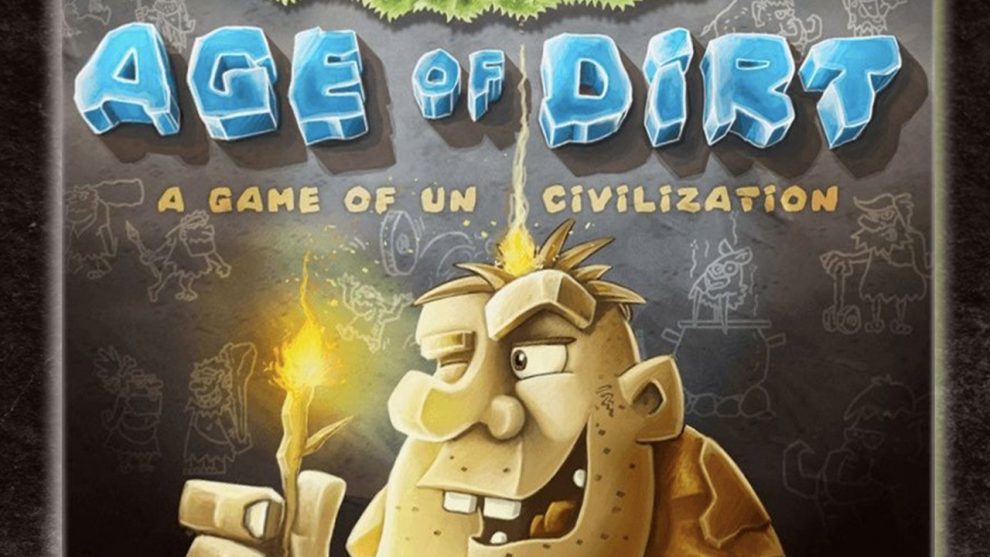

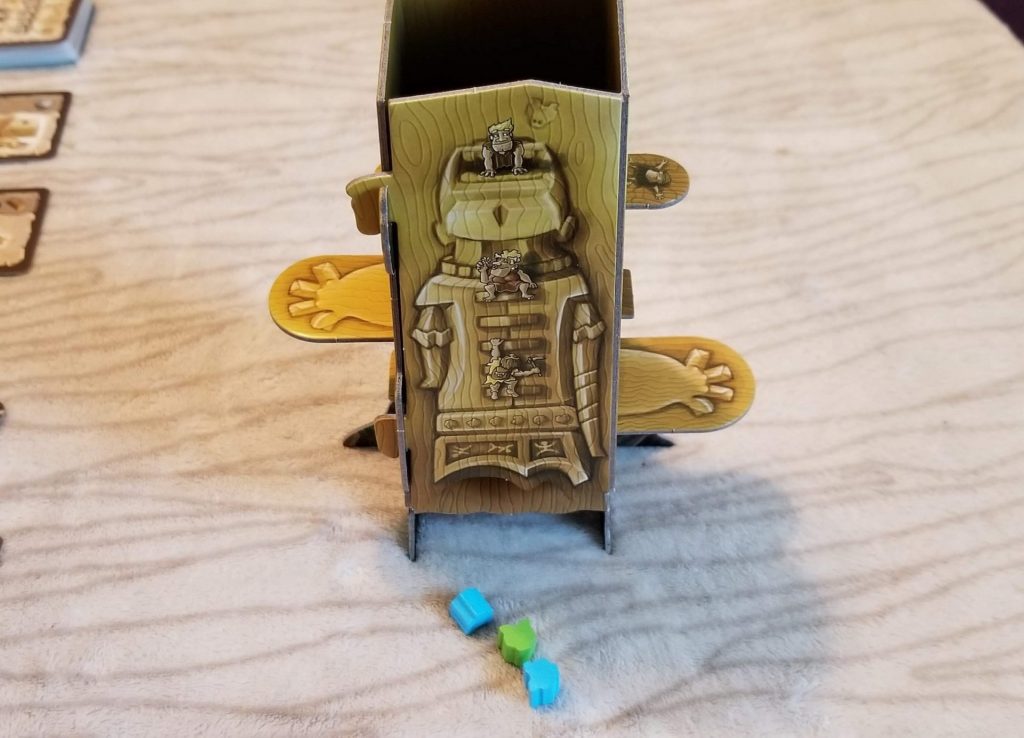
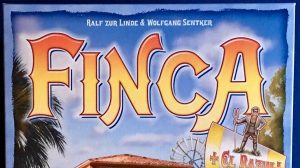
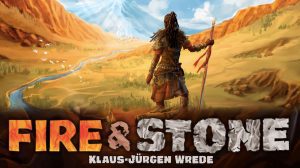






Add Comment